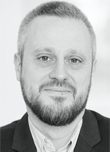Bench To Boardroom: A Scientist-Turned-CEO's Journey

By Matthew Pillar, Editor, Bioprocess Online

Denis Dufrane, M.D., Ph.D. wanted to skip the formal part. An accomplished academic and clinician, he’d spent 15 years at the Université Catholique de Louvain—where he’d earned his M.D. and his Ph.D. in biomedical sciences with a concentration on cell therapy—researching cell- and tissue-based approaches to bone, skin, muscle, and organ reconstruction in worst-case patients. That work came on the heels of a focus on the pancreas and type 1 diabetes that, following the publication of the Edmonton Protocol in the New England Journal of Medicine in 2000, leaned heavily into the potential of cell-based therapies to correct diabetes. By 2007, he was back in the diabetes arena, working on adipose stem cell therapies to improve the production of insulin. It was during that work, gaining a granular understanding of the function of adipose stem cells, that he began to explore their potential in skin, bone, and muscle regeneration.

“I wanted to demonstrate the clinical benefits for the patients under compassionate use first, before organizing a business,” says Dufrane. “Then we would look into a tech transfer.” That compassionate clinical activity was based out of Dufrane’s lab at St. Luc University Hospital, where he served as head of both the Musculoskeletal Tissue Bank and the Tissue/Cells Therapy Centre. Dufrane led it, clearly reluctant to step away from the science and into the c-suite.
The Long Learning Curve From CSO To CEO
By 2013, the scientific and clinical foundations of a company were built, and the results were looking fundable. Young professor Dufrane decided to launch a company called Novadip Biosciences around his development, known today as the 3M3 tissue regeneration platform. Within two years, a Series A gave the company a €28 million shot in the arm. But Dufrane still wasn’t ready to lead. A veritable dictionary illustration of the biotech scientific founder, he was a reluctant CEO. He wasn’t quick to abandon his post at the University, either—not until Novadip’s clinical value proposition was established. Then, it became a matter of practicality. “I don’t think you can perform 50/50 between academia and building a biotech company,” he says. “You have a conflict of interest.”
At 40 years old, the academic-founder Dufrane excelled as chief scientific officer and founder. He landed the funding that would get the company off the ground and begin growing its talent, all the while acknowledging that wasn’t where the company needed him most at the time. “In 2015, the CEO’s role was to build the company and put structure to it. My value was not in this position,” he says. “Developing new technology was where I brought the most value, because in 2015, we only had one product.”
Adding value by building out a product portfolio is where Dufrane focused for the next five years. That’s profoundly important in the cell therapy space, where clinical perils are prevalent. Dufrane considers the present the “second wave” of cell therapy. In the first wave, he says, Phase 3 failures were all too frequent, and those failures killed many a one-product wonder whose “beautiful dream” couldn’t be confirmed in their pivotal studies.
By 2020, Novadip’s pipeline had grown to six programs across its two product candidates; NVD-003 (an autologous single treatment for critical size bone reconstruction) and NVD-X3 (an allogeneic approach for patients with no viable cells to address prevalent indications in hard and soft tissue reconstruction, including bone grafting procedures such as spinal fusions). It’s also leveraging its platform to generate purified and highly-specific miRNA Exosome therapeutics that can target solid tumors and metastatic disease. In fact, says Dufrane, it was the successful use of the miRNA therapy in a patient with osteosarcoma that helped Novadip complete its Series A round.
That’s when Novadip’s board requested that he become CEO, which he finally did. His first order of business was to refuel the coffers with a Series B, but he knew this round wouldn’t look anything like the Series A he’d orchestrated a few years earlier. While he and his development team were heads-down in the lab, a pandemic was gripping the globe, changing the rules of business in its wake. If anything, that leveled the playing field for the academic practitioner-turned-chief fundraiser. “Our series B round was purely virtual,” says Dufrane, adding that the exercise taught the young company a lot about the nuances of raising money on a globally diverse stage. “I’m more in my comfort zone raising funds in the U.S., where investors are more aware of the science and the mechanisms of action, and they challenge you on them. In the EU, fundraisers are expected to have a more business-oriented, MBA profile. It’s a completely different philosophy from one continent to the next.”
Learning The CEO/CFO Language
Dufrane admits that he faced a learning curve is his move from chief science spokesperson to chief executive spokesperson. Where he previously spoke specialist—basic science, mechanisms of action—he had to learn to speak generalist—product, clinical indication, value proposition, market, patient access. Having never been exposed to biopharma financials, he also took a finance course to learn CFO-speak. “Making those links between the science and business was the most difficult part of the transition for me,” he says.
Of course, biopharma scientists-turned-CEOs face the reverse challenge, as well. Novadip operates its own GMP manufacturing facility to supply the clinical studies it’s running in Belgium, Luxembourg, Poland, and Czechia. That facility is in the same Belgian facility where Dufrane works, and he admits he’s had trouble keeping his nose out of the clinicians’ business. “That’s why we recruited a chief medical officer and a head of discovery,” he says. “I’ve felt some frustration when I’m listening to new approaches to the presentation of our products, and the angles we’re taking on the value of our data. I just have to sit back and recognize that it’s a different approach, and give them full freedom.”
Dufrane is also quick to add that, while Novadip’s manufacturing facilities are capable of producing clinical supply for its current trials in small-population rare pediatric disease, and while he deems the company capable of managing commercial activity in that population, he’s not averse to outsourcing when and if he company’s candidates gain traction in larger orthopedic and tissue regeneration indications. “I think believing that you need to keep all of your manufacturing in-house is weakness,” he says. “There’s no strength in assuming you need to control everything. If your technology and manufacturing is strong, you can perform a tech transfer. I want to have strength in manufacturing to be sure that we can externalize our competencies and expertise.”
Clinical Activity Determines What’s Next For Novadip, And Its CEO
With a firm cash runway through the end of 2024, Dufrane says the next critical step for Novadip is the delivery of clinical trial data to support the commercialization of its lead autologous candidate, NVD-003, for the treatment of a rare pediatric bone disease, congenital pseudarthrosis of the tibia. The company is enrolling patients in a Phase 1b/2a trial in the US and Europe.NVD-003 has orphan drug designation in the US and if it is approved by the FDA, Novadip becomes eligible for a priority review voucher that could be worth up to $100 million in funding
Simultaneously, it’s evaluating its lead allogeneic candidate NXD-X3 in separate trauma and spinal fusion trials, in addition to preclinical programs in allogeneic solid tumor oncology cell therapy and exosome-based skin/tissue regeneration. “If we have three clinical trials with good results, we’ll look to an IPO to fund the company’s progression,” he says.
As for Dufrane, his mindset is still where it started. Will he remain CEO at Novadip? Possibly. But his modus operandi is that of a utility player. He’ll go where he’s needed, and he’ll make room for who else is needed when necessary. “My goal is to be in the best position to continue the company’s growth. My personal interest isn’t important. What’s important is ensuring the company can serve a patient population.” If that means bringing new ideas into the CEO’s office, Dufrane welcomes it. “You need renewal. You need balance. You need multiple viewpoints,” he says of the captain’s position. One thing you won’t likely see is the research scientist-turned-CEO’s return to academia. Asked if he misses it, he offers a confident “no.” “I have no regrets. That was one page of my life, now I’m on another,” he says.
